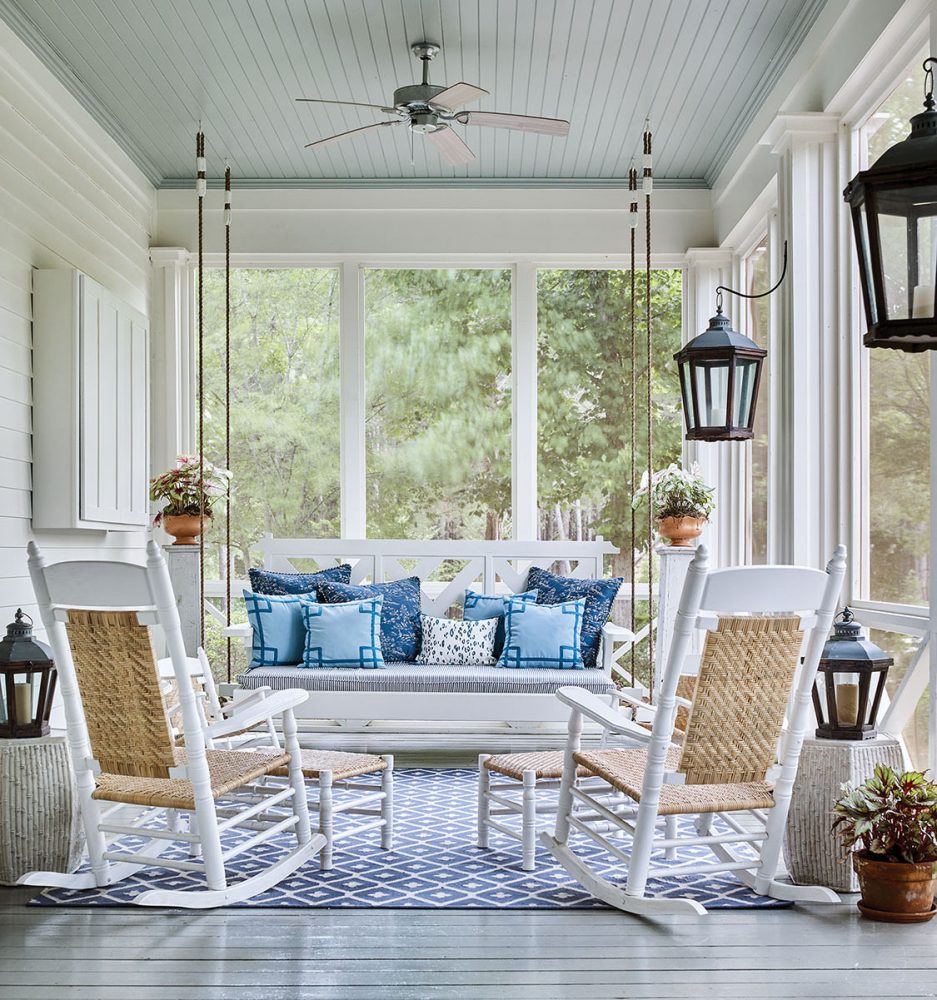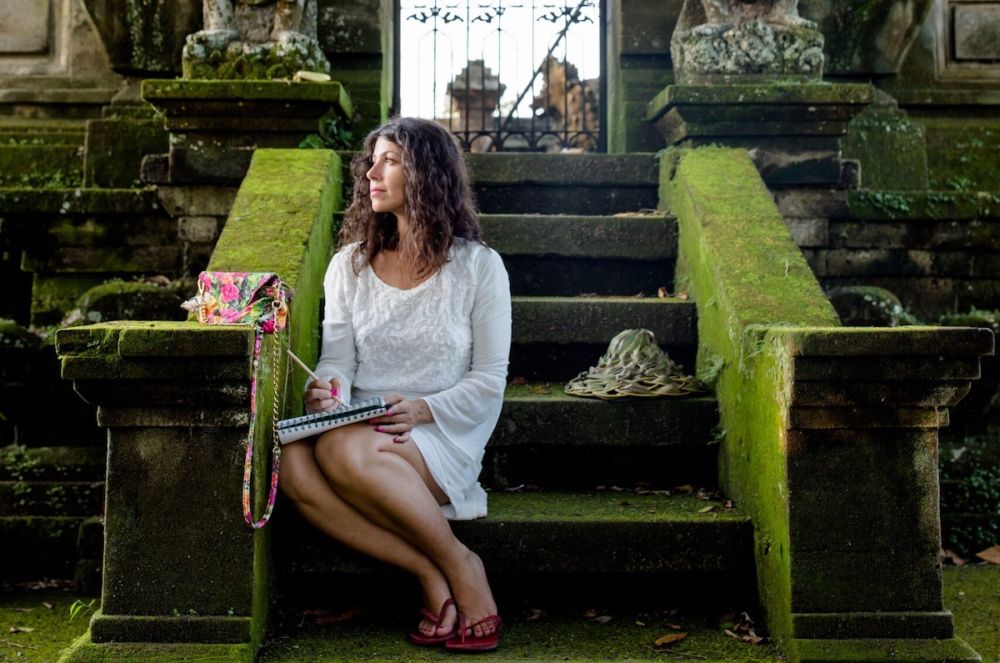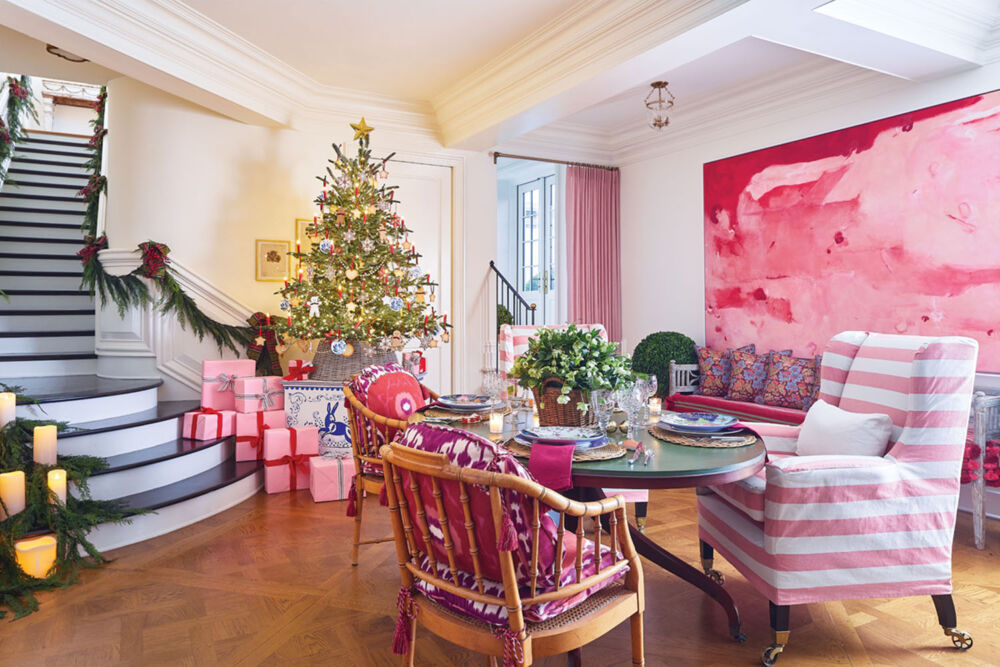The array of flower colors and their shape and fragrance have made English garden roses increasingly popular with American flower arrangers and gardeners.
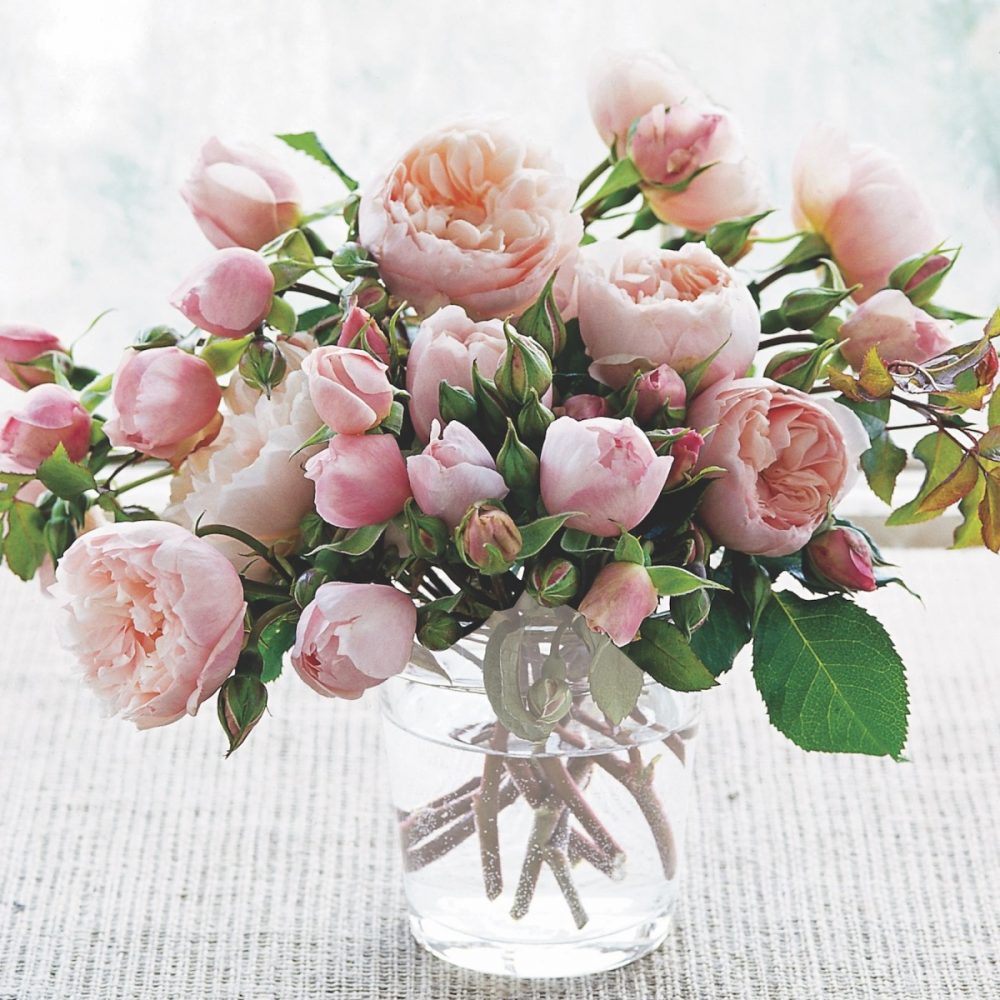
English roses and buds! This arrangement incorporates both buds and blooms of ‘The Generous Gardener.’
In the early 1950s, David Austin (1926–2018) of Wolverhampton, England, began breeding roses. Now a family business, David Austin Roses has developed hundreds of varieties that combine the graceful style of the old roses of the 19th century—full of petals, outstanding fragrance, and muted color—with larger blooms and stronger stems that arrangers appreciate. The rose shrubs are healthy, smaller (4–6 feet by 4–6 feet), and bloom all season, especially if deadheaded.
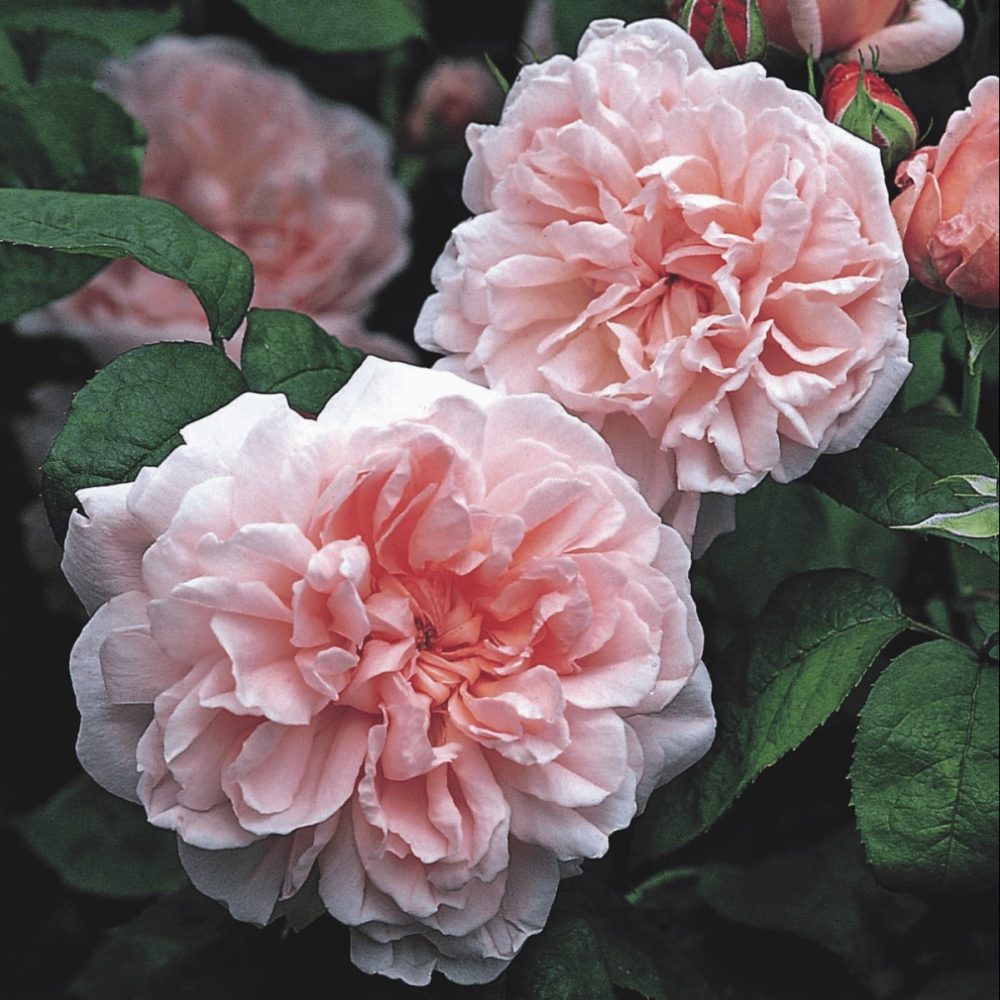
The popular ‘Eglantyne’ English garden rose (AUSmak) in bloom
English Garden Roses Varieties
How do you choose the right English rose for your garden? As Sheila Macqueen, the renowned British floral designer, rightfully said, “What an impossible task to choose a collection of roses!” The following are healthy, reliable, and easy to grow, and all but one repeat flower. Among the best David Austin roses for cutting in the U.S. are:
- CHARLOTTE – Soft-yellow upward-facing blooms on strong stems growing on compact bushes. Good as a standard.
- CONSTANCE SPRY – Sheila Macqueen called this one of the best. Large pink flowers, musky scent of myrrh, with the look and fragrance of a 19th-century cabbage rose. Flowers only once.
- EGLANTYNE* – Large soft-pink, saucer-shaped blooms that are sweetly scented. A large shrub well suited for a corner or the back of the border.
- GOLDEN CELEBRATION* – A whiff of citrus emanates from these rich yellow, many-petaled blooms. Place it within the mixed border where its canes can mingle with perennials.
- GRAHAM THOMAS* – Yellow cup-shaped flowers on arching stems, densely petaled, with a rich tea-rose scent and old-fashioned look.
- LD BRAITHWAITE*– Large bright crimson blooms with a light scent. Can be used as a standard.
- MARY ROSE – A rich pink with a strong damask fragrance and winsome, old-fashioned look. Grows on a small 4-by-4-foot bush. It flowers early and is one of the last to finish in the fall.
- MOLINEUX – Tea rose-scented yellow rosettes with a hint of musk. This short, evenly growing shrub is good for a large container or a low hedge.
- QUEEN OF SWEDEN – This rose has 140 petals that open from little rounded buds. The soft-pink hue later develops a hint of apricot. Very few thorns and a long vase life.
- TESS OF THE D’URBERVILLES* – Large, bright crimson, deep cups with an old rose fragrance. Use two climbing on a pillar.
- WILLIAM SHAKESPEARE 2000 – The most popular crimson rose, with quartered rosettes and an old rose scent. “Quartered” means many petals in serried ranks forming a scalloped arrangement.
*These should be pruned after first flowering to encourage better and quicker repeat flowering.
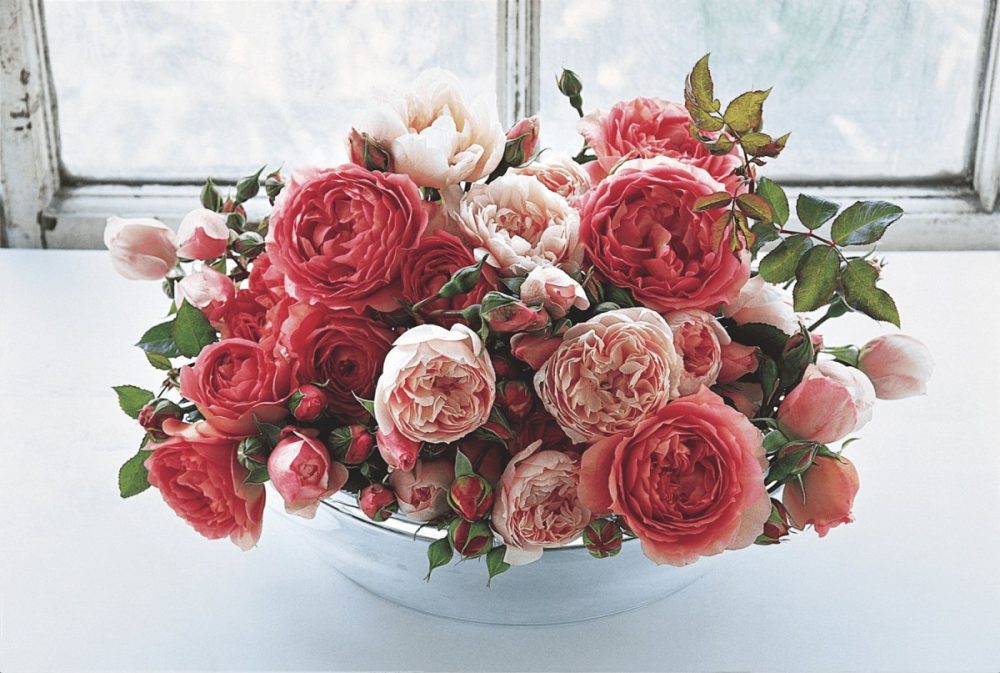
A classic mix of ‘The Generous Gardener’ with large, full ‘Jubilee Celebration’ (AUShunter) steals the show arranged in a low bowl.
Cutting, Conditioning, and Arranging English Roses
Plunge stems immediately into a pail of water, and then recut under water before conditioning. If you leave conditioning roses in the refrigerator, remove apples and pears because these fruits release ethylene, a natural ripening agent that will cause roses to drop their petals.
Arrange English roses en masse, in a mixed arrangement, or in an arrangement of many shades of one color. Or, float roses in a cut glass or silver bowl.
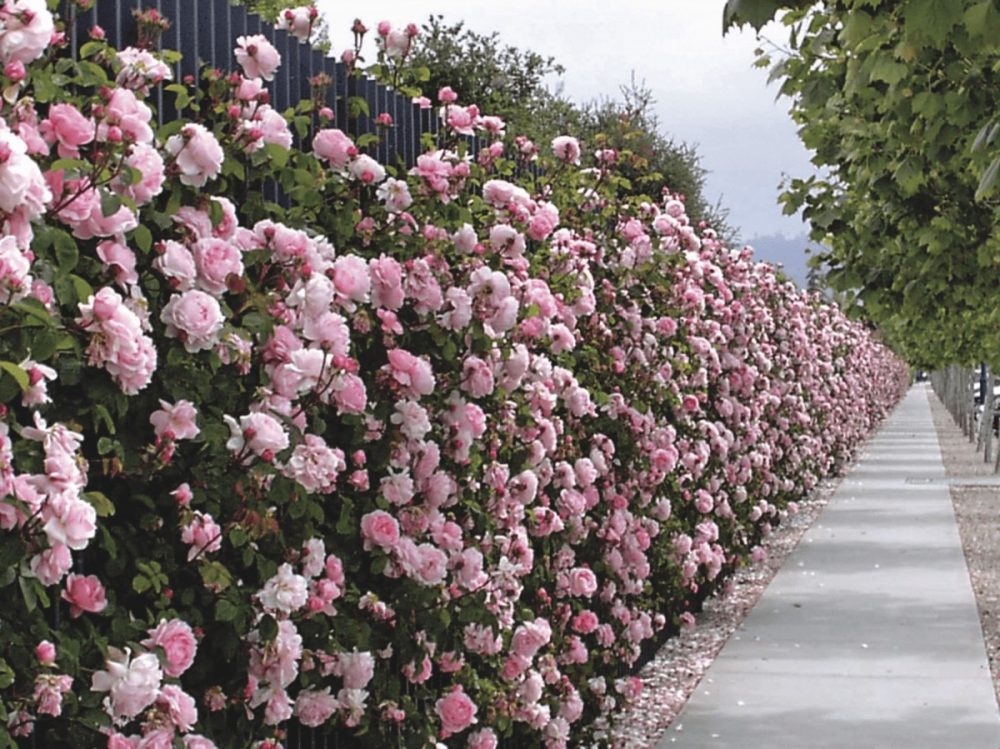
An impressive pathway of ‘Constance Spry’ English roses (AUSfirst).
Designing an English Rose Garden
These days you seldom see a garden composed strictly of roses. Today’s gardener mixes one-third roses with two-thirds other flowering shrubs, perennials, and annuals to hide their “knees” and complement the rose’s color and shape. Surround each rose with combos like white ‘Becky’ daisies, blue Siberian iris, catmint, geranium ‘Rosanne’, pink phlox, dianthus, veronica, and plumbago.
Allow tall perennials such as salvia, thalictrum, delphinium, and artemisia to grow right up through the canes. Shorter partners for the front of the roses are anchusa, lady’s mantle, and Campanula persicifolia. Underplant roses with spring bulbs. Try using some evergreens so there is something to look at during the winter. Balance the visual weight of a large rose bush with a group of three small shrubs. Incorporating arches and pergolas will add vertical dimension.
Most English roses grow well and repeat flower in U.S. Zones 5–8. For the colder zones 4–5, some good varieties are: ‘Crown Princess Margareta,’ ‘A Shropshire Lad,’ ‘Graham Thomas,’ ‘Redouté,’ ‘The Mayflower,’ and ‘Mary Rose.’
For warmer zones 9–10, choose ‘Huntington Rose,’ ‘Miss Alice,’ ‘Scepter’d Isle,’ ‘Sophy’s Rose,’ or ‘The Prince.’
By June Mays | Photography courtesy of David Austin Roses
Can’t get enough English roses? We love The Rose by David Austin.



